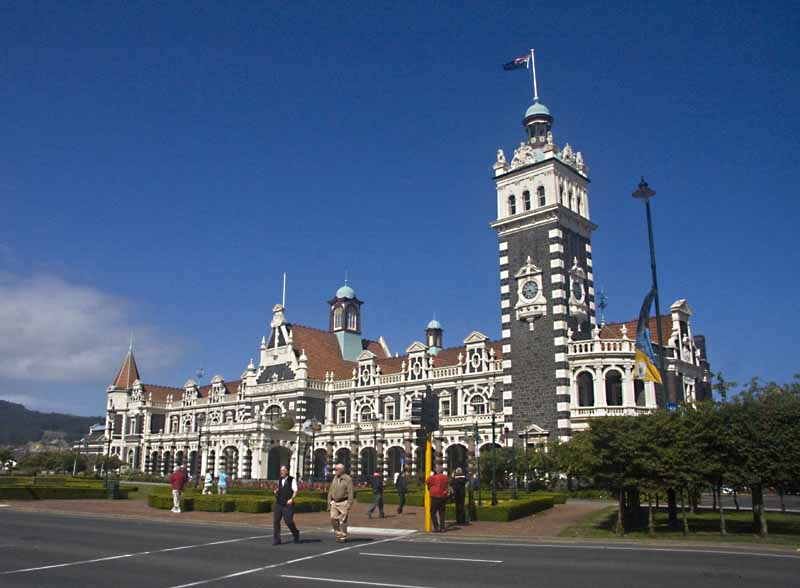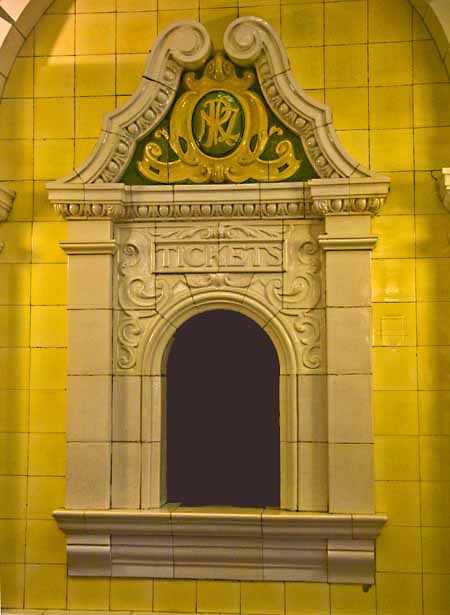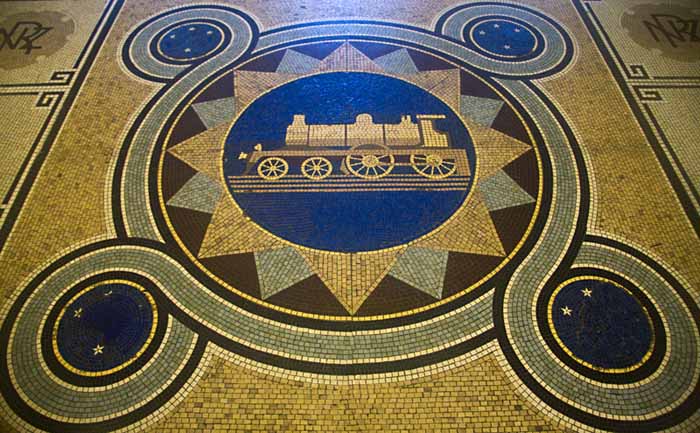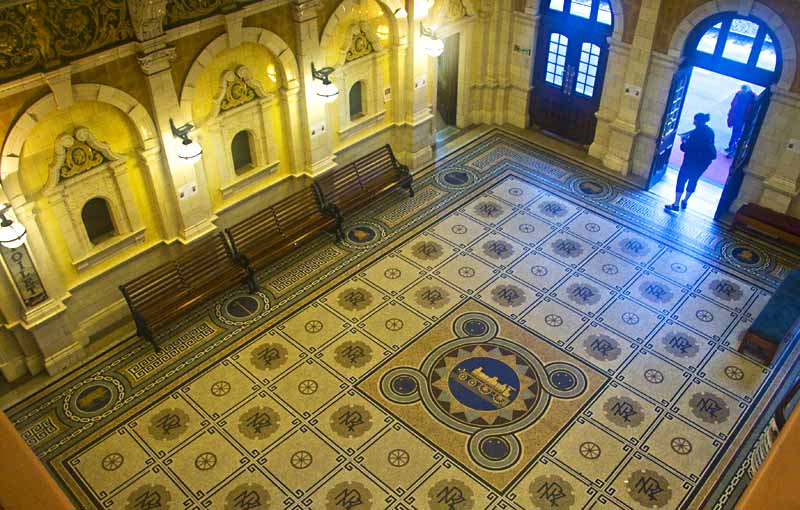A Trip to Australia and New Zealand
Dunedin - The Railway Station

Rail operations commenced in Dunedin in the mid-1870s, but the current station (the fourth) was not completed until 1906. It was designed by Sir George Alexander Troup, the first official architect of the New Zealand Railways, and is described as being an example of Renaissance Revival architecture with Flemish overtones. (Locals in Dunedin call Troup "Gingerbread George" because of the ornate style of his design. Troup was born in London of Scottish parents and emigrated to New Zealand in 1884. After working for the national railway system, he went on to become mayor of Wellington and an influential New Zealand parliamentarian.)

The station is built of dark basalt rock with a lighter colored limestone rock used for many of the facings. The roof is covered with terracotta tiles from France. The floor of the main booking hall is covered with about 750,000 porcelain tiles from the Royal Doulton Ceramics Company in London. The clock tower at the south end of the station rises about 100 feet and is still one of the tallest structures in town. The station's main platform is the longest in the country at one kilometer.

At the peak of rail activity in New Zealand, the Dunedin station handled up to one hundred trains a day and was the busiest in the country. They carried passengers, coal, ore, agricultural and timber products, and the royal mail. Today the station is still used for a tourist excursion train and the building houses an art gallery and a sports hall of fame.

